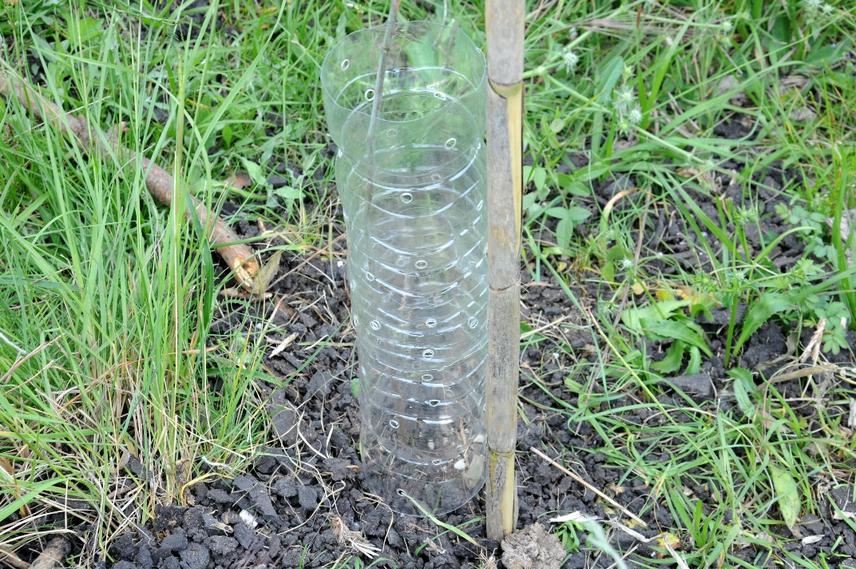Nicolas Vaiman
Agricultural expansion in the study area has been produced at the expense of native forest and its associated grasslands. Our project attempts to regenerate tree cover in abandoned agricultural fields, where invasive and heliophilous herbs compete with native grasses for domination of the herbaceous stratum. Besides, trees could not regenerate due to grazing pressure that very often happens in these areas. We will plant Prosopis alba because it is a typical species in native forests and have performed well in greenhouse and field stages in previous experiments. Moreover, its nitrogen fixing capacity can increase soil organic matter levels and the treetop partial shadow is expected to benefit native grassland species.

Rodent protector made from recycled bottles.
The loss of native forest around the globe is a major concern because of ecosystem products and services they provide. Even though agriculture, forestry and other land use are responsible for one quarter of total greenhouse gas emissions they have a huge potential to capture carbon dioxide if it is well managed. Hence, restoration of forest can be beneficial in two clear ways: locally, it can regulate hydric cycle, increase organic matter levels in soils and provide habitat for species, socioeconomic benefits like jobs, among others; and globally, it generates carbon sequestration which makes a contribution to mitigate climate change.
In the study region, a profound modification of the ecosystem had taken place because of land use change, where native forests were deforested for an agricultural use. After the “productive” period, the ecosystem could not restore tree cover and the understory strata have been altered in such a way that heliophilous and invasive plants are gaining coverage in the present.
Our work has two main goals. First, we intend to restore the forest and part of its functionality. Along with this, we presume that native Poaceae grass species will be boosted by the presence of the tree, and heliophilous and invasive species will reduce their abundance. The restoration of a native ecosystem will generate favourable conditions not only for grass species but also for endemic mammals, birds and insects. Besides, as the history sequence of land use of the site field is representative of changes in land use at a province level, our results will provide guidelines for ecosystem recovery.
Second, the restoration of native forest will be communicated by different means, raising awareness in the society. On the one hand, social networks publications via institutional webpages will bring to public view our achievements. On the other hand, and more important yet, the actual possibility of showing the results of the project will produce comprehension of the importance of native forest and its products and services. The whole process (from seedling in greenhouse to tree establishment) will be presented to different actors: from children at school level to agricultural producers. The former will learn about our native forest and the last will be able to appreciate how to produce native plants to perform forest enrichment in their fields, which is a possibility considered in the Argentinean law regarding native forest.